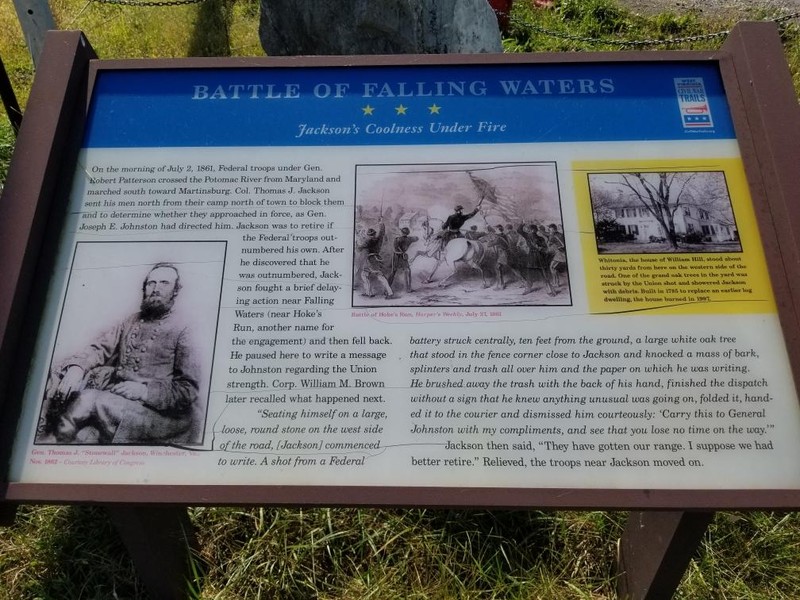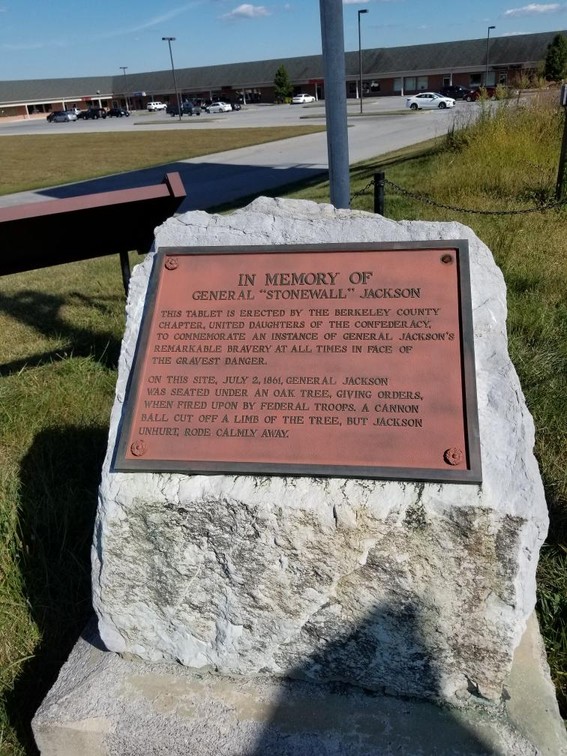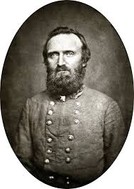The Battle of Falling Waters: Jackson's Coolness Under Fire
Introduction
Text-to-speech Audio
Images
The Battle of Falling Waters: Jackson's Coolness Under Fire marker on the side of Route 11

Jackson earned his famous "Stonewall" name the same year, 1861

Jackson was said to be very laid back and calm

Backstory and Context
Text-to-speech Audio
At this time in history, the United States was in a Civil War. Some states wanted to remain part of the Union, while others wanted to rebel with the Confederates. The main focus of the war was state's rights, particularly those that involved slaves. The state of Virginia was torn in the war. The western part of Virginia wanted to remain with the Union, while the eastern side wanted to side with the Confederates.
Thomas J. Jackson was born in Clarksburg, Virginia (now West Virginia) in 1824. He graduated from the United States Military Academy and then fought in the Mexican War from 1846-1848. After the war, he left the military and began teaching at the Virginia Military Institute. During the Civil War, after Virginia succeeded from the Union, Jackson joined the Confederate Army under General Robert E. Lee. The Battle of Falling Water's was Jackson's first engagement in the civil war.
On July 2nd during the Battle of Falling Waters, the Union crossed the Potomac River from Maryland into Virginia. From there, General Robert Patterson instructed his troops to head south to Martinsburg. In response, Colonel Thomas Jackson sent his troops north to block the Union. While blocking, Jackson’s troops were to asses the Union’s numbers. Jackson had been directed by General Joseph E. Johnston, one of the highest ranking Confederates, to retreat if they were outnumbered.
Although the troops reported to Colonel Jackson that they were outnumbered, he nevertheless fought. At some point during the fight, Jackson sat down to write a letter to General Johnston to inform him of the Union’s strength. He sat underneath a large white oak tree while the fight was still blazing on and began to write. Suddenly, the tree was struck by a shot and a large limb fell close to Colonel Jackson. Unhurt, he wiped the fallen debris from himself, and handed the letter to the letter carrier as if nothing had happened.
Sources
The Battle of Falling Waters 1861, Falling Waters Battlefield Association. Invalid date. Accessed October 6th 2019. http://www.battleoffallingwaters.com/.
Coughlin, Bill. Battle of Falling Waters Jackson's Coolness Under Fire, HMdb.org. April 11th 2011. Accessed October 6th 2019. https://www.hmdb.org/Marker.asp?Marker=58083.
Stonewall Jackson Biography, The Biography.com website. April 2nd 2014. Accessed October 7th 2019. https://www.biography.com/military-figure/stonewall-jackson.
Jeff Green
Jeff Green
Wikipedia
